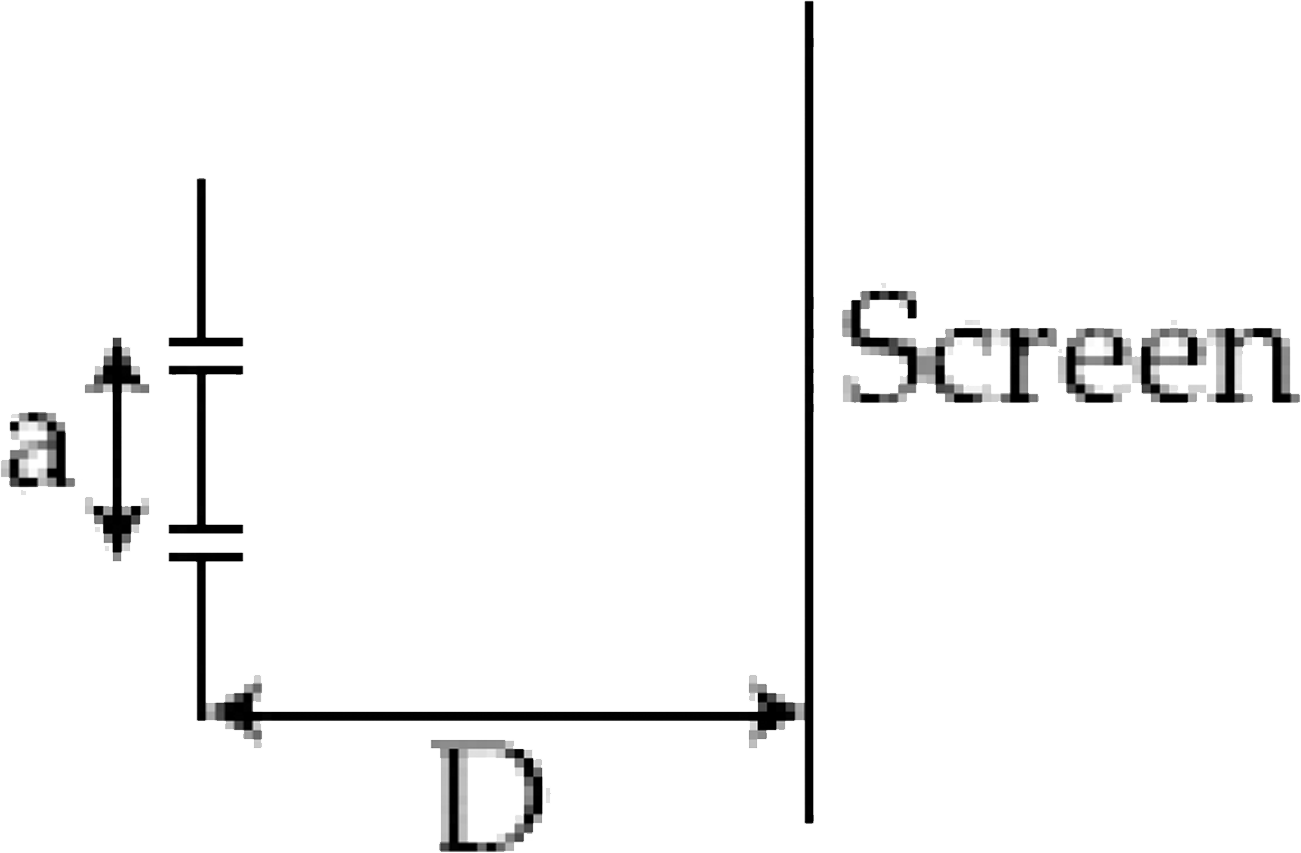Interference fringes were produced in Young's double slit experiment using light of wavelength 5000 Ã…. When a film of material 2.5×10−3cm thick was placed over one of the slits, the fringe pattern shifted by a distance equal to 20 fringe widths. The refractive index of the material of the film is
1.25
1.33
1.4
1.5
The correct Answer is:C
To solve the problem step by step, we will follow the principles of interference in Young's double slit experiment and apply the relevant formulas.
Step 1: Write down the given data
- Wavelength of light, \lambda = 5000 \, \text{Å} = 5000 \times 10^{-10} \, \text{m}
- Thickness of the film, t=2.5×10−3cm=2.5×10−5m
- Shift in fringe pattern, s=20fringe widths=20β
Step 2: Understand the relationship between fringe width and displacement
The fringe width β in Young's double slit experiment is given by:
β=λDd
where D is the distance from the slits to the screen and d is the distance between the slits.
Step 3: Calculate the shift in fringe pattern
When a film of refractive index μ and thickness t is placed over one of the slits, the shift in the fringe pattern s can be expressed as:
s=(μ−1)tDd
Given that s=20β, we can equate the two expressions:
20β=(μ−1)tDd
Step 4: Substitute the expression for β
Substituting β=λDd into the equation gives:
20(λDd)=(μ−1)tDd
Step 5: Cancel common terms
Since D and d are common in both sides, we can cancel them:
20λ=(μ−1)t
Step 6: Solve for the refractive index μ
Rearranging the equation to solve for μ:
μ−1=20λt
μ=1+20λt
Step 7: Substitute the values
Now substituting the values of λ and t:
μ=1+20×(5000×10−10)2.5×10−5
Step 8: Calculate the numerical value
Calculating the right-hand side:
μ=1+20×5000×10−102.5×10−5=1+100000×10−102.5×10−5=1+1000002.5×10−5+10=1+4000
μ=1+4000=4001
Step 9: Final calculation
The refractive index μ is calculated as:
μ=1.4
Conclusion
The refractive index of the material of the film is μ=1.4.
- Wavelength of light, \lambda = 5000 \, \text{Å} = 5000 \times 10^{-10} \, \text{m}
- Thickness of the film, t=2.5×10−3cm=2.5×10−5m
- Shift in fringe pattern, s=20fringe widths=20β
The fringe width β in Young's double slit experiment is given by:
β=λDd
where D is the distance from the slits to the screen and d is the distance between the slits.
When a film of refractive index μ and thickness t is placed over one of the slits, the shift in the fringe pattern s can be expressed as:
s=(μ−1)tDd
Given that s=20β, we can equate the two expressions:
20β=(μ−1)tDd
Substituting β=λDd into the equation gives:
20(λDd)=(μ−1)tDd
Since D and d are common in both sides, we can cancel them:
20λ=(μ−1)t
Rearranging the equation to solve for μ:
μ−1=20λt
μ=1+20λt
Now substituting the values of λ and t:
μ=1+20×(5000×10−10)2.5×10−5
Calculating the right-hand side:
μ=1+20×5000×10−102.5×10−5=1+100000×10−102.5×10−5=1+1000002.5×10−5+10=1+4000
μ=1+4000=4001
The refractive index μ is calculated as:
μ=1.4
The refractive index of the material of the film is μ=1.4.
Topper's Solved these Questions
- WAVE OPTICSBOOK - NCERT FINGERTPS ENGLISHCHAPTER - WAVE OPTICSEXERCISE - HIGHER ORDER THINKING SKILLS
8 Videos
- WAVE OPTICSBOOK - NCERT FINGERTPS ENGLISHCHAPTER - WAVE OPTICSEXERCISE - NCERT EXEMPLAR PROBLEMS
5 Videos
- SEMICONDUCTOR ELECTRONICS : MATERIALS , DEVICES AND SIMPLE CIRCUITS BOOK - NCERT FINGERTPS ENGLISHCHAPTER - SEMICONDUCTOR ELECTRONICS : MATERIALS , DEVICES AND SIMPLE CIRCUITS EXERCISE - Assertion And Reason
15 Videos
Similar Questions
Interference fringes were produced in Young's double-slit experiment using light of wavelength 5000Å. When a film of thickness 2.5×10−3cm was placed in front of one of the slits, the fringe pattern shifted by a distance equal to 20 fringe-widths. The refractive index of the material of the film is
View SolutionYDSE is conducted using light of wavelength 6000Å to observe an interference pattern. The slits are 2mm apart. The fringes are observed on a screen 10cm away from the slits. When a film of some material 0.5mm thick was placed over one of the slits, the fringe pattern shifted by a 5mm. What is the refractive index of the material of the film ?
View Solution
Knowledge Check
In Young's double slit experiment, the fringe width with light of wavelength 6000 Ã… is 3 mm. The fringe width, when the wavelength of light is changed to 4000 Ã… is
A3 mmB1 mmC2 mmD4 mmThe slits in Young's double slit experiment are illuminated by light of wavelength 6000 Ã…. If the path difference at the central bright fright fringe is zero, what is the path difference for light from the slits at the fourth bright frings?
A2.4×10−6mB1.2×10−6mC10−6mD0.5×10−6m
Find the angular fringe width in Young's double slit experiment using a monochromatic light of wavelength 500 nm when the slits are separated by 2.5 mm.
View SolutionFind the angular fringe width in a Young's double slits experiment with blue-green light of wavelength 6000A. The separation between the slits is 3.0×10−3m.
View SolutionIn Young's double slit experiment, when light of wavelength 4000A∘ is used 90 fringes are seen on the screen. When light of 3000 A is used, the number of fringes seen is
View SolutionThe figure shows a Young's double slit experimental setup. It is observed that when a thin transparent sheet of thickness t and refractive index μ is put front of one of the slits, the central maximum gets shifted by a distance equal to n fringe widths. If the wavelength of light used is λ, t will be :

View SolutionIn Young.s double slit experiment, blue-green light of wavelength 500nm is used. The slits are 1.20mm apart, and the viewing screen is 5.40m away from the slits. What is the fringe width.
View SolutionWhen entire Young's double slit apparatus is immersed in a liquid the fringe width decreases by 20∘. The refractive index of the liquid is
View Solution
